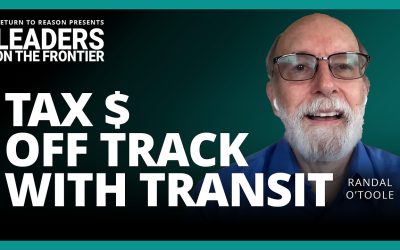Financing infrastructure projects is typically a complex process, involving transfers between provinces, cities, and neighbourhoods. While it is possible (though not easy) to track transfers between provinces, it is difficult to track transfers between cities, and impossible to track transfers between neighbouhoods. After all, cities don’t track how much they collect from each neighouboorhood compared to how much they spend within those neighbourhoods. The opaque funding methods municipal governments use make it easy to spend on vanity projects that voters might not support if they understood the impact on their pocketbooks, and for mayors to overspend in political battleground neighbourhoods to win elections.
If the above assertion isn’t persuasive, consider the Scarborough subway line recently muscled through by Mayor Ford with the help of his federal and provincial counterparts. The federal government is keen to hold on to its hard won electoral gains in suburban Toronto, and the provincial government (which initially opposed the project) decided to support it during the last round of by-elections (where the Liberal government was in serious danger of losing a seat). There is no public policy argument for prioritizing construction of this suburban subway line, and local residents would be extremely unlikely to approve of this project if they had to foot the bill. But they don’t have to.
This project won’t just be a misallocation of resources. It will add stress to the already overstressed spine of the subway system to which it will connect. In other words, it will worsen transit for neighourhoods that real,y need it, and improve it for ones that don’t.
The argument mustered by Mayor Ford for prioritizing the Scarborough subway is that Downtown has “enough subways already.” That argument makes no sense whatsoever. Any suburban subway would exist to feed commuters in to the overcapacity downtown lines. Moreover, it is suburban commuters, rather than downtown commuters, who are stressing the system in the first place. Ostensibly “Downtown” projects such as the poorly named Downtown Relief Line would blunt the impact of suburban riders, and accommodate Downtown growth. Given the condo boom, stress on the Yonge-University-Spadina Line is a borderline emergency. Yet, the mayor has it third in line after extending the suburban Sheppard Line.
The irony is that Downtown residents and businesses pay vastly more in property taxes, due to higher property values, yet cannot use that revenue to build infrastructure to accommodate their own needs. Instead, their money funds infrastructure in the suburbs that will boost other people’s property values. That challenge suggests an elegant solution: tax away those increased property values to pay for infrastructure.
A recent letter to the editor in the Toronto Star by former Green Party of Ontario leader and current Earthsharing Canada president Frank de Jong elegantly presents this solution, known as land value capture (LVC). By taxing away the economic rents (also known as unearned income) created by infrastructure projects, residents would lose the biggest incentive for supporting wasteful infrastructure projects: increased property values. Since any surplus would be returned to the treasury to fund future infrastructure, the focus would shift to providing good public infrastructure, rather than getting one’s share of infrastructure spending regardless of viability.
Another political consequence would be a reduction in opposition to infrastructure expansions outside of one’s own neighbourhood. Since the beneficiaries of higher property values would end up paying for the project, it becomes irrelevant to the rest of the city from a financial standpoint. This approach would virtually ensure that the Downtown Relief would be built in short order, and would likely mean that the Scarborough and Sheppard lines would be de-prioritized. From a public policy standpoint, that would be a very good outcome. It would also be fair.
Land value capture is a tool that most large Canadian cities could benefit from. It would help de-politicize infrastructure projects, and help to expedite the most crucial capital expansions. Given that local residents would pay a large share of the cost, they would be more likely to weigh the costs as highly as the benefits. That would lead to much more rational infrastructure policy.


